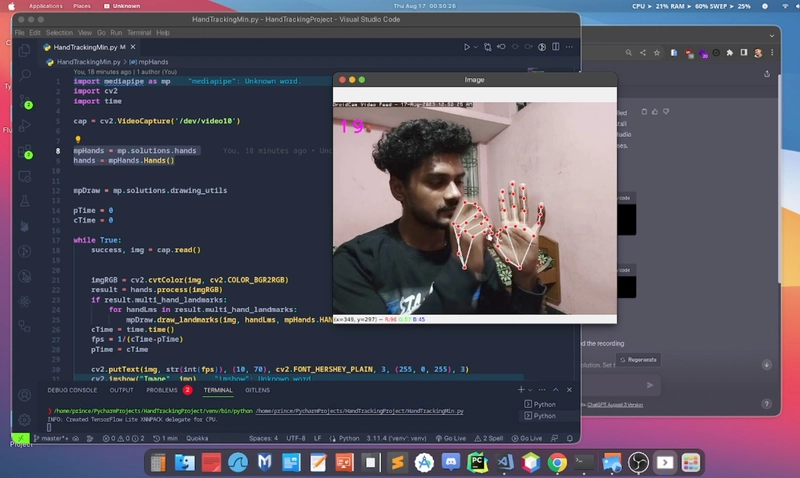
Welcome to an exciting journey into the world of computer vision! In this blog, we'll guide you through building a real-time hand tracking application using two powerful Python libraries: MediaPipe and OpenCV. By the end of this page, you'll be able to create an application that can detect and track hand landmarks in a video stream, paving the way for interactive experiences, gesture recognition, and more.
Prerequisites
Before we begin, ensure that you have both the mediapipe and opencv-python libraries installed. You can install them using the following command:
pip install mediapipe opencv-python
Step 1: Initializing the Environment
Let's start by importing the necessary libraries and initializing some variables:
import mediapipe as mp
import cv2
import time
# Initialize the video capture
cap = cv2.VideoCapture(0)
# Initialize the hand tracking model
mpHands = mp.solutions.hands
hands = mpHands.Hands()
# Initialize the drawing utility
mpDraw = mp.solutions.drawing_utils
# Initialize time variables
pTime = 0
cTime = 0
Step 2: The Tracking Loop
Next, we'll create an infinite loop to continuously process frames from the video capture and perform hand tracking:
while True:
success, img = cap.read()
imgRGB = cv2.cvtColor(img, cv2.COLOR_BGR2RGB)
result = hands.process(imgRGB)
if result.multi_hand_landmarks:
for handLms in result.multi_hand_landmarks:
mpDraw.draw_landmarks(img, handLms, mpHands.HAND_CONNECTIONS)
cTime = time.time()
fps = 1 / (cTime - pTime)
pTime = cTime
cv2.putText(img, str(int(fps)), (10, 70), cv2.FONT_HERSHEY_PLAIN, 3, (255, 0, 255), 3)
cv2.imshow("Hand Tracking", img)
if cv2.waitKey(1) & 0xFF == ord('q'):
break
Step 3: Wrapping Up
Lastly, we need to release the video capture resources and close the OpenCV windows when we're done:
cap.release()
cv2.destroyAllWindows()
Conclusion
Congratulations! You've successfully built a real-time hand tracking application using MediaPipe and OpenCV. This application can detect and visualize hand landmarks while displaying the frames per second (FPS) on the video stream. Now you have a solid foundation to explore further and integrate hand tracking into various projects, from virtual reality interactions to creative gesture recognition applications.



Top comments (0)